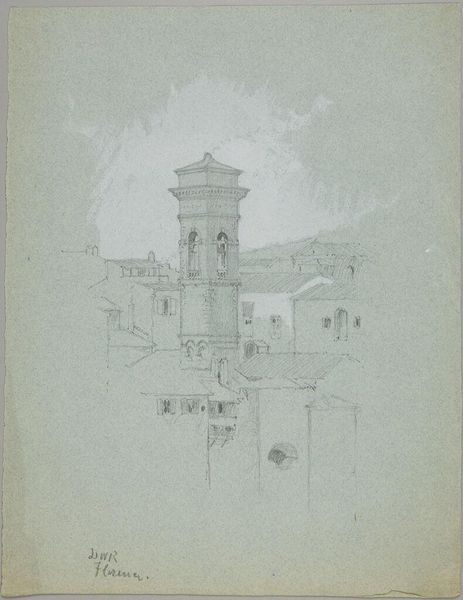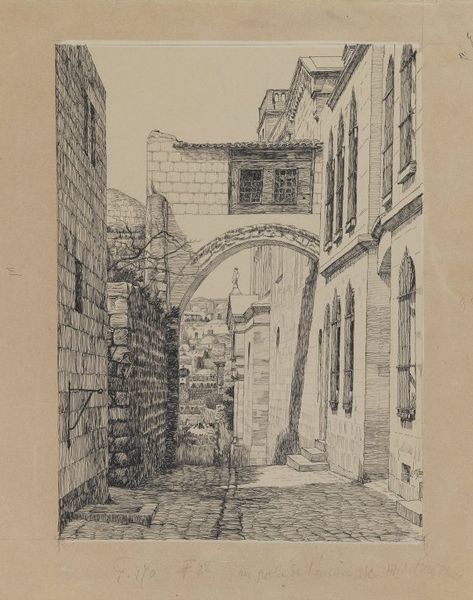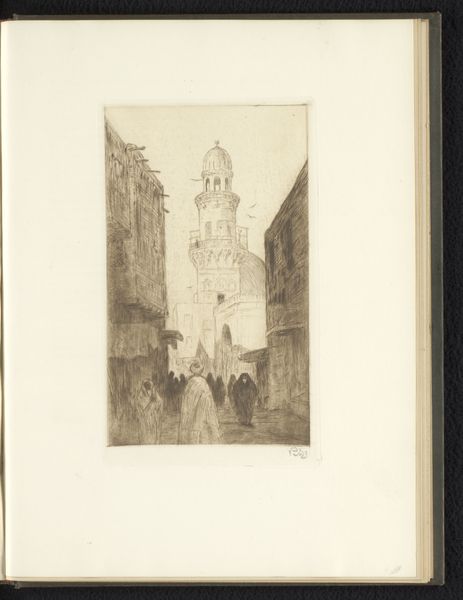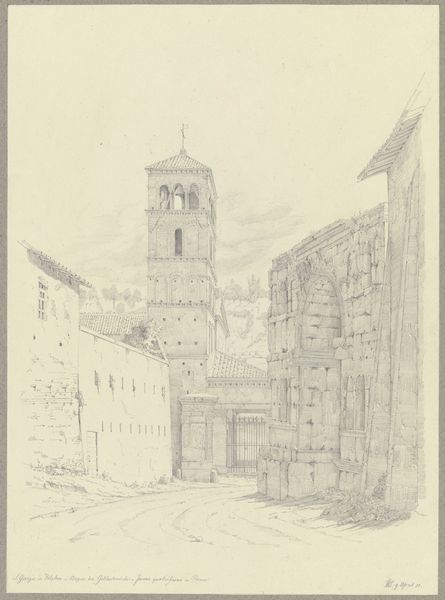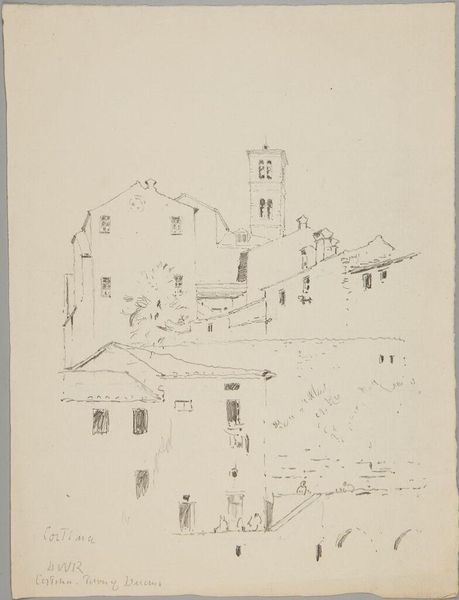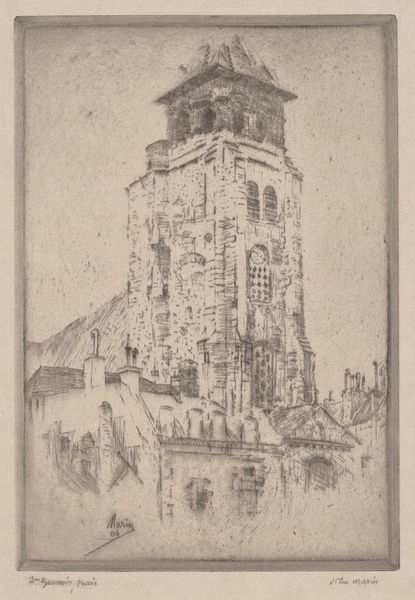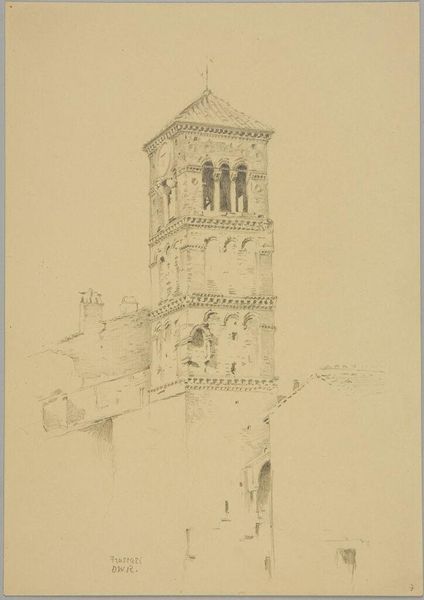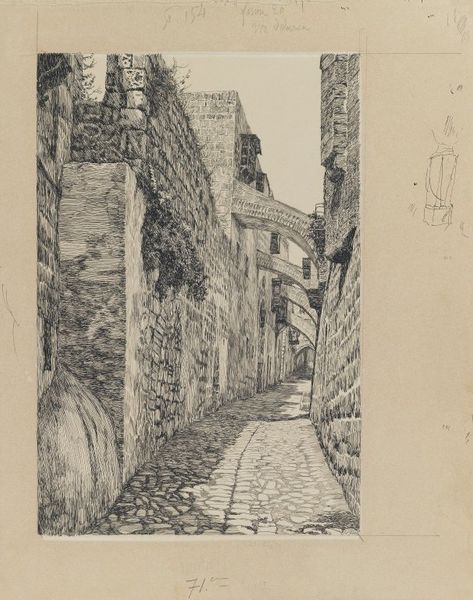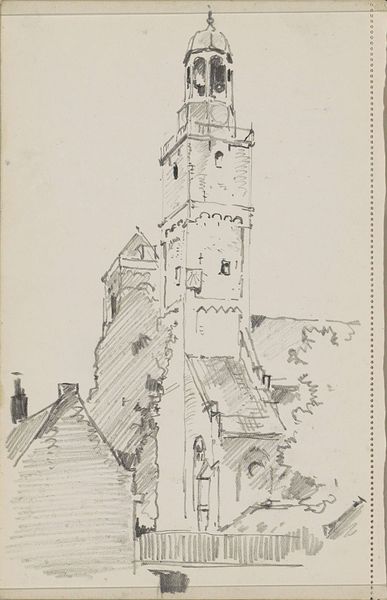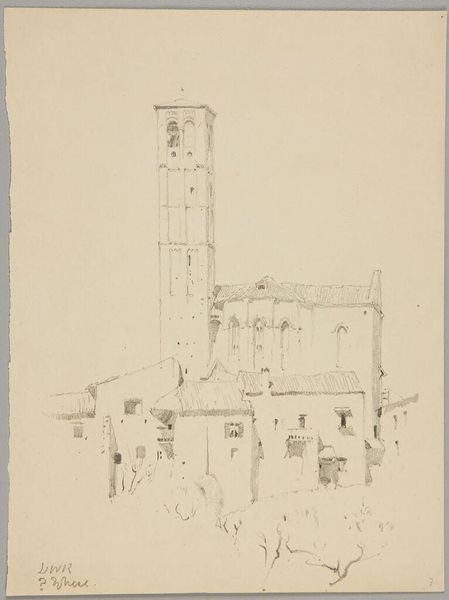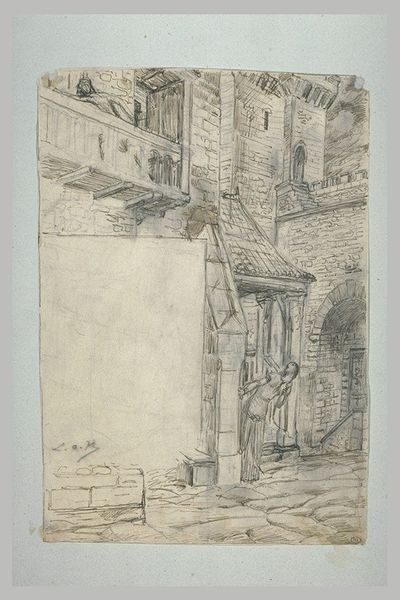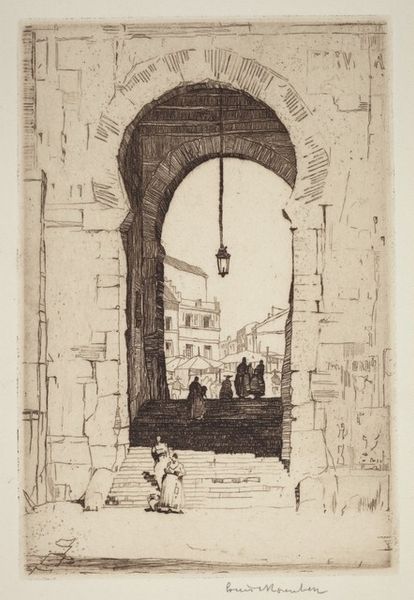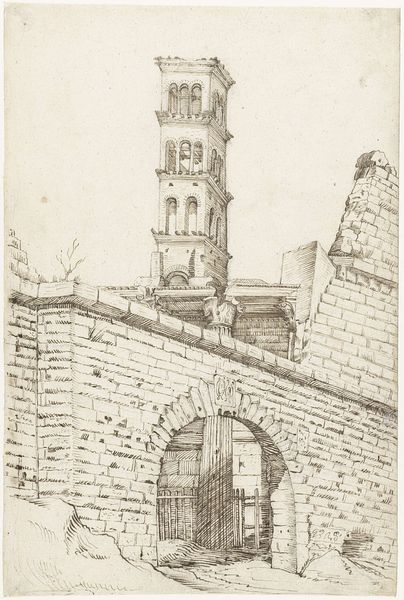
drawing, intaglio, pencil, architecture
#
architectural sketch
#
drawing
#
amateur sketch
#
aged paper
#
light pencil work
#
intaglio
#
pencil sketch
#
sketch book
#
incomplete sketchy
#
landscape
#
personal sketchbook
#
sketchwork
#
detailed observational sketch
#
sketch
#
pencil
#
france
#
architecture
#
realism
Dimensions: 24.8 x 15.2 cm
Copyright: Public domain
Curator: What strikes me immediately about James Tissot's 1889 pencil drawing, "Site of the Antonia Tower," is its starkness. There's an almost melancholic quality to it. What are your initial thoughts? Editor: The meticulous detail in the stonework is what gets me. You can almost feel the weight and texture of the stones, the layering, the labor inherent in constructing such a massive structure. It really highlights the sheer materiality of the site. Curator: Absolutely. And if we think about the socio-political context, this location represents layers of power. The Antonia Tower itself, initially built by the Hasmoneans, then expanded by Herod the Great... It embodies a history of shifting rulers and occupied spaces. It makes me consider the ever changing and contested politics around religious artifacts and architecture. Editor: Right, and that context profoundly shapes our understanding of the material. The specific stones used, their quarrying, their placement — all directly linked to Roman imperial power and resource extraction. Tissot is, in a way, documenting the very tangible remnants of that history. Curator: He’s definitely capturing a moment in time, a specific gaze on this historically charged place. The perspective emphasizes the dominating architecture and the open area feels strangely barren and empty. It feels like a moment ripe with complex meaning, but lacking human action. What can that represent in relation to how places of significant conflict can exist? Editor: It’s not simply documenting the architecture, but also the evidence of human intervention on landscape, right? This wasn’t untouched wilderness—the landscape bears the scars of heavy construction, of quarrying, of imperial projects. Curator: Thinking about how Tissot, a French artist, depicts this site, what layers of colonial gaze or religious yearning might we need to unpack to situate him and this image? Editor: Exactly, by looking at how this location served particular socio-political goals for many cultural forces, that is vital context here, it emphasizes the inherent human shaping and manipulation of the landscape to make us examine its meaning, power and implication, rather than simply treating it as a natural setting. Curator: A sobering point, truly. Tissot offers not just a depiction, but an artifact steeped in social meaning and production. Editor: Yes, a testament to the stories materials can tell, far beyond aesthetics.
Comments
No comments
Be the first to comment and join the conversation on the ultimate creative platform.
